Have you tried red cabbage sauerkraut? This is a simple recipe made in the traditional way of lacto fermenting. Don't be scared off by the term, I will show you how truly easy it is to lacto ferment your own red cabbage sauerkraut with just a few simple ingredients. Once you try this, you'll never buy it again!
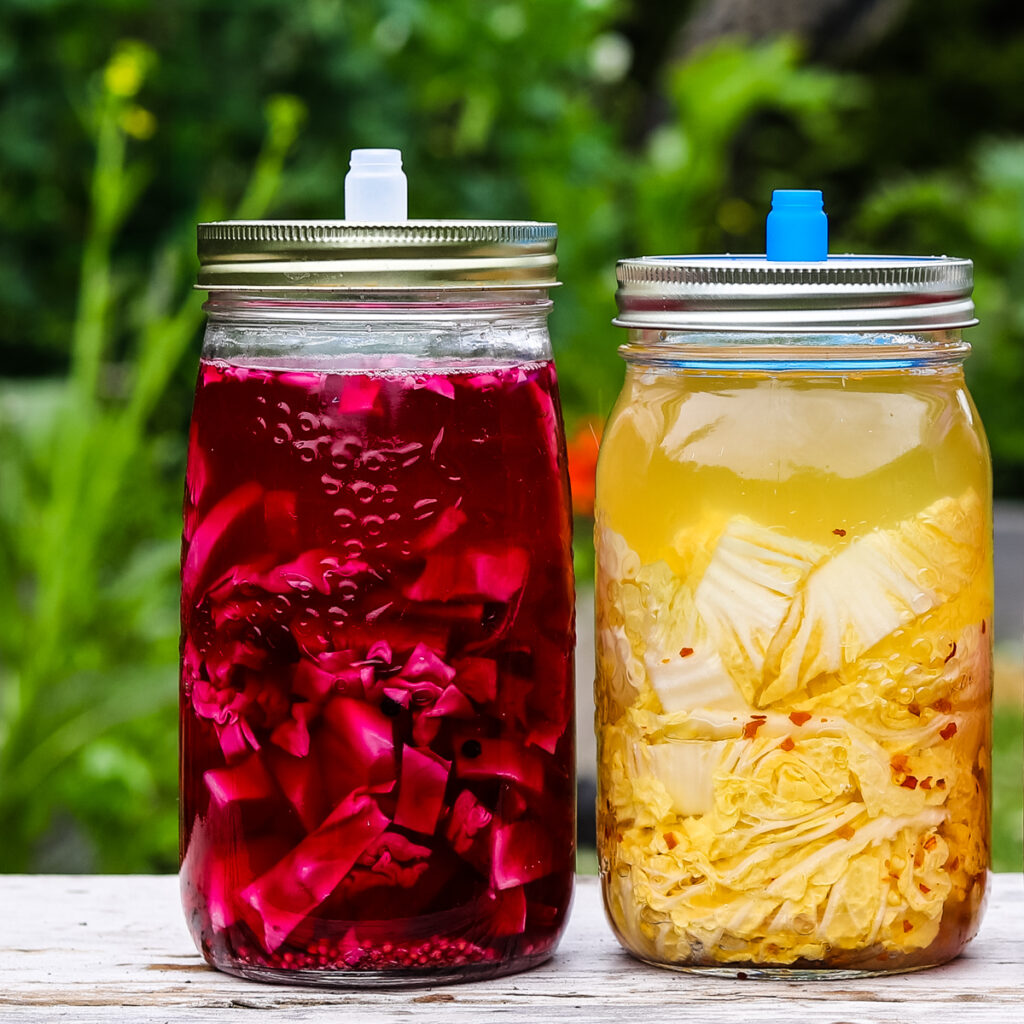
Jump to:
Natural pickling
Pickling can be done by using a strong vinegar mixture or by brining and fermenting. I will be walking you through the fermenting style. Fermented foods are excellent for gut health with all the probiotics.
For more awesome fermented vegetables, try my Fermented Radishes and Lacto Fermented Garlic Scapes.
Sauerkraut basics
Making sauerkraut the traditional way is a simple process that is returning in popularity. The result is a distinct tart and complex flavor full of healthy probiotic bacteria and great for gut health.
The basics are clean uniformly sized produce, a salt water brine and a non-porous jar or crock to keep the fermenting food submerged, creating a safe and airless environment. Fruit and vegetables naturally contain the right bacteria (lactobacillus) to do this job with little intervention from you, creating a naturally pickled flavor.
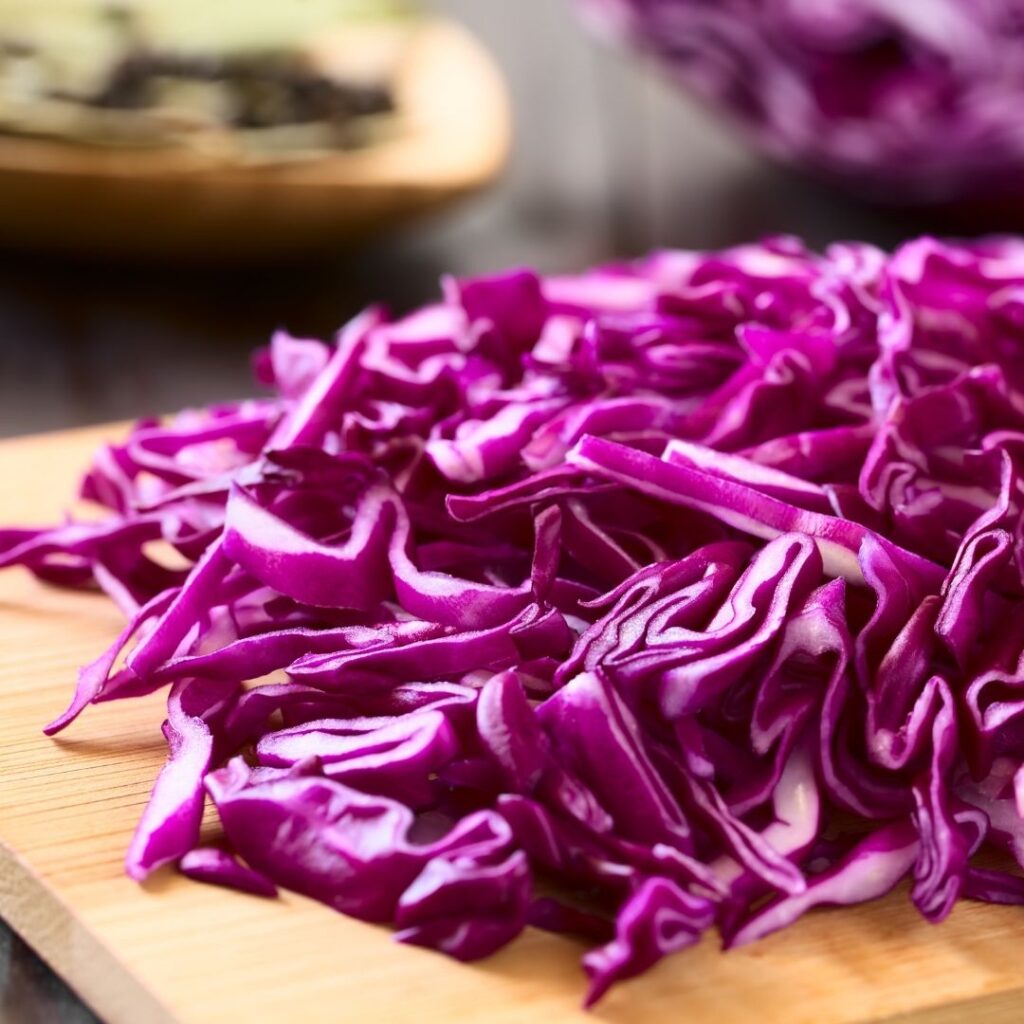
What Inspired This Recipe
I was introduced to sauerkraut from my Great Grandfather who immigrated from the Ukraine. He grew his own vegetables and fermented his own sauerkraut. While many people assume sauerkraut is German, Wikipedia hypothesizes that it was started in China and was then brought to Europe. Many Eastern European countries make their own regional recipes now.
I love the Ukrainian food of my memories. My grandparents and great grandparents made all sorts of delicious traditional foods that I truly love and crave. You can check out my Ukrainian borscht recipe here, or try Lacto Fermented Garlic Scapes which are made in the same method as this red sauerkraut.
Flavors of Sauerkraut
Sauerkraut is traditionally made with white cabbage. Red cabbage works just as well with a slightly sweeter flavor and a stunning color that will add life to any plate. My preference is the sweeter red cabbage sauerkraut. Fermented cabbage has a pleasantly tangy, natural vinegar flavor. It is bold and complex with a pleasing crunch. This preservation method is fairly salty. While fine in small quantities if you want to eat more as a side dish, it is best to rinse a little salt out first.
Herbs, spices and extra fruit and vegetable additions will also change the flavor. While cabbage is the main ingredient, there are many flavor combinations. Shredded apple, beet or carrot, cranberries, caraway seeds, juniper berries and even white wine each define regional specialties. Korean kimchi is made with the same method but adds hot red pepper, yum!
Step By Step Instructions
Start by gathering you jars and ingredients. Make sure all equipment is perfectly clean.
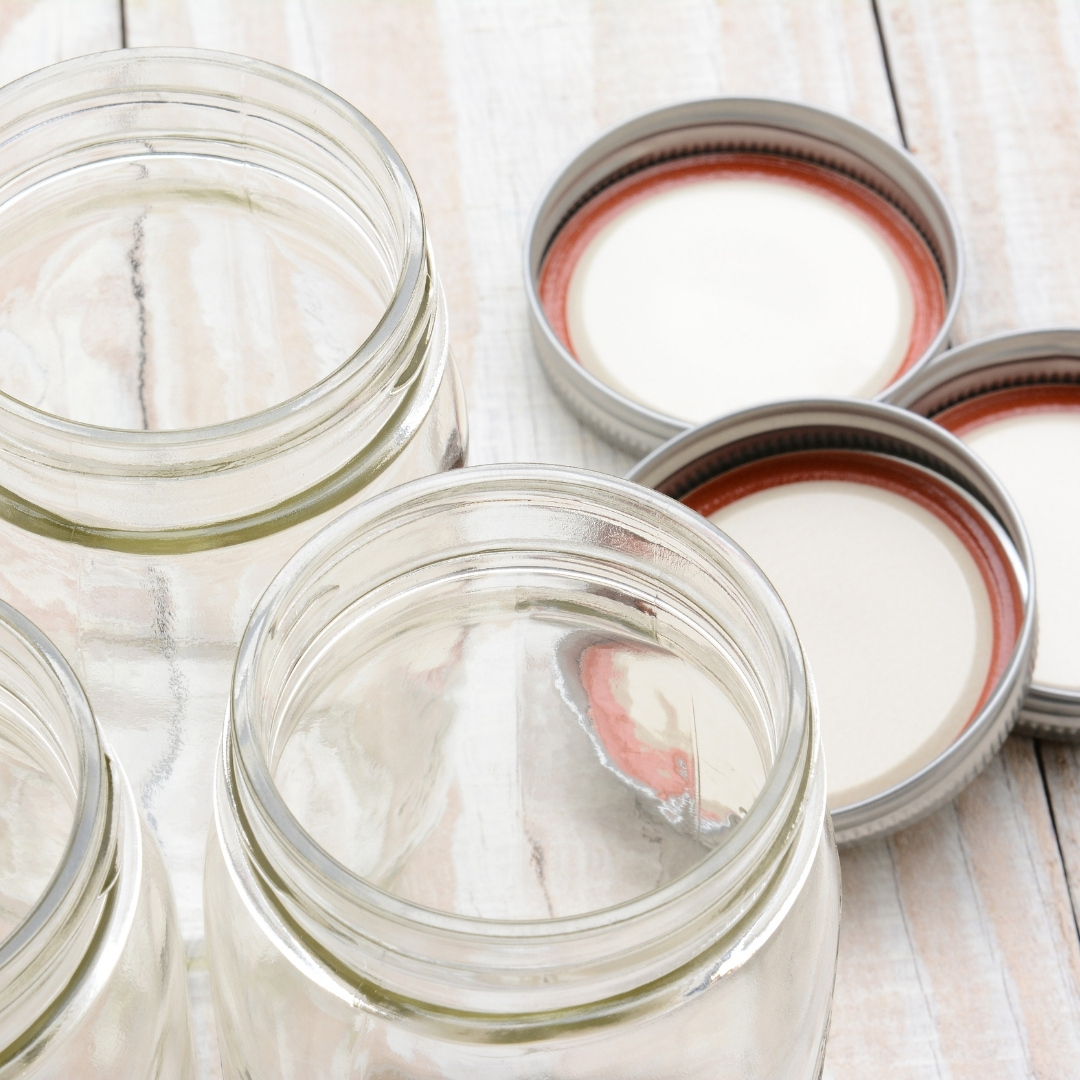
Shred your cabbage finely. Using a mandoline helps make evenly sized pieces and makes quick work fo shredding it. Alternatively, a sharp knife works well too.

Make your brine. The simple solution of filtered or otherwise unchlorinated water and pure salt is the perfect mixture. Use kosher or sea salt that doesn't have any extra additives.
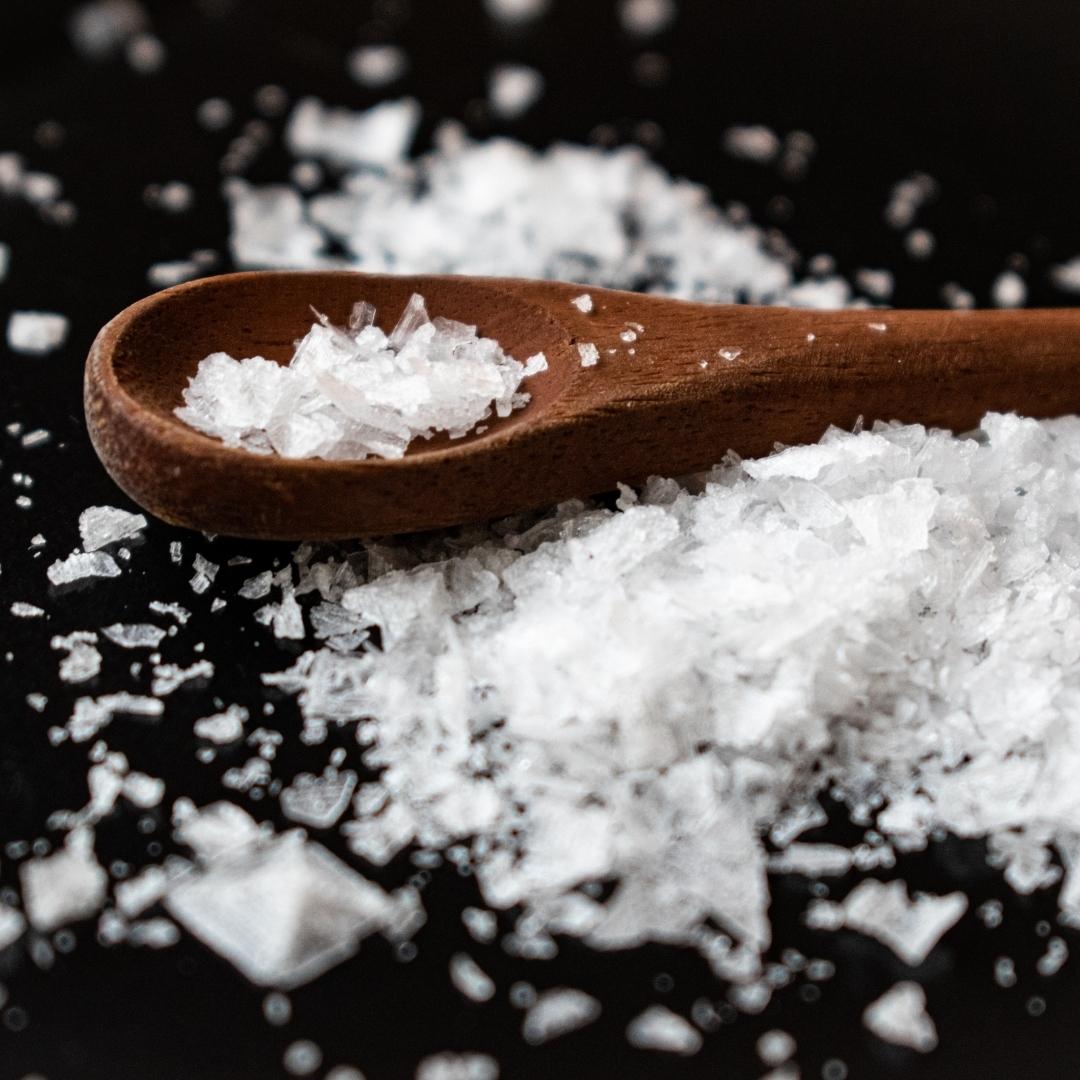
Fill your jars with any spices, herbs and flavorings. Then pack shredded cabbage in tightly leaving an inch of space at the top. Finish by pouring brine mixture over so it covers cabbage.
Top with a weight, whether homemade or storebought and then a lid. Using an airlock or pickle pipe is great, but you can also use a regular canning lid if that's all you have. Simply open and reclose the lid once a day to "burp" the jars. This allows the build up of gas to be released.
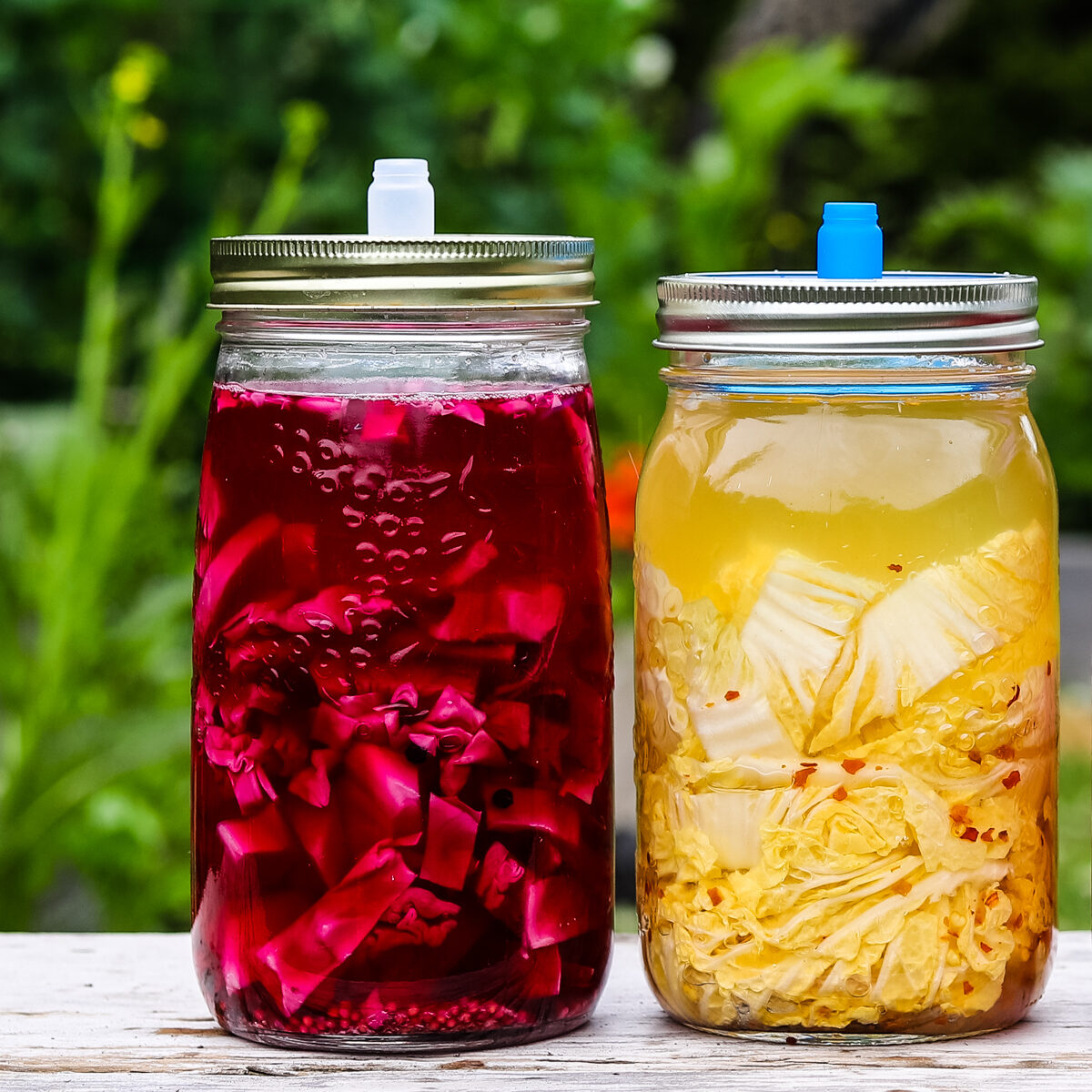
Let your ferment (cabbage with spices and brine) sit for 7-10 days. It will likely get cloudy for a few days before clearing again. Ferment as long as you like until it is to your liking. Taste test it after 7 days and then every 2 days after until you decide it has the pickled flavor you love.
Once you are happy with the flavor, top it with a regular canning jar lid and store in your refrigerator or cold storage. Enjoy it right away or a little bit at a time. The beneficial bacteria keep this from going bad so it will keep easily up to 3 months as long as no foreign bacteria are introduced.
What Foods Are Fermented?
Other common and simple to make fermented foods include yogurt, kefir, many vegetable pickles, kimchi, miso and even fish. You may feel concerned about spoilage if doing it yourself for the first time but this traditional method is safer than most people realize.
What do you eat with red cabbage sauerkraut?
Options are plenty from my favorite Ukrainian dishes of pierogis and kielbasa, to French and German recipes like choucroute garnie or franks. It makes a tangy, crunchy crisp foil as a side dish with sausage or pork dishes.
Top a hot dog or make a Reuben sandwich. This unique pickled cabbage defines a Reuben sandwich which is corned beef with swiss cheese, sauerkraut and Russian dressing or mustard on grilled rye bread. You can add it as a filling in pierogis too.
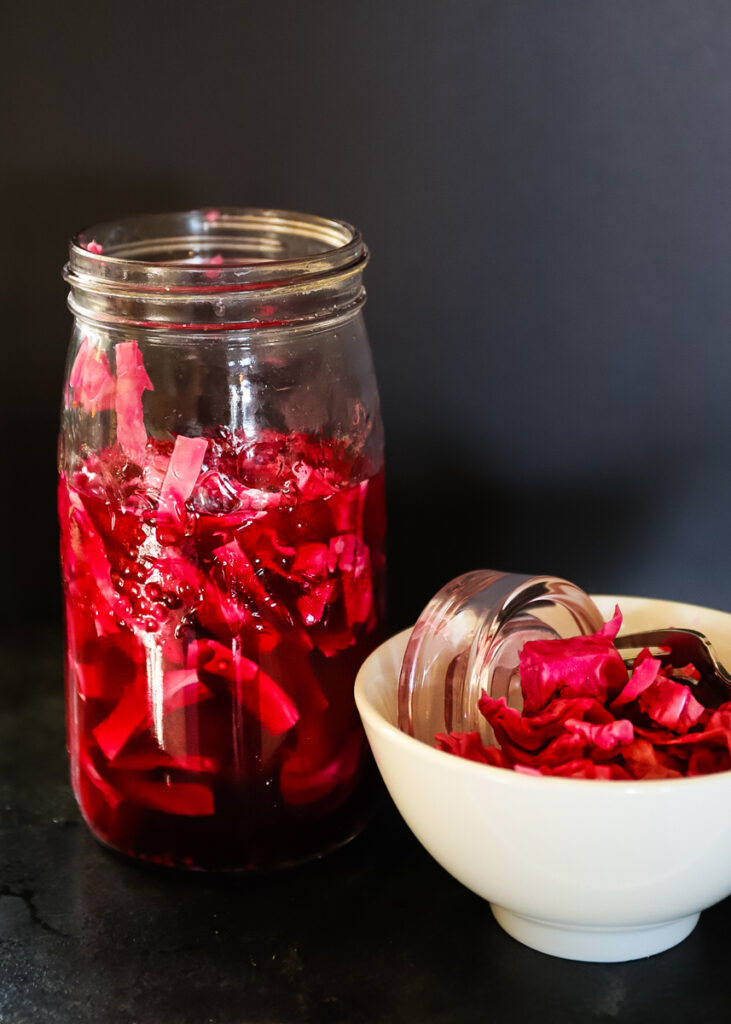
Storage
Kept in the fridge, this will keep easily for 3 months or longer. In cold storage, you should plan to use within 3 months. Usually this won't actually go "bad" but will lose the crispness and bright color if left longer.
Tips and Tricks for Foolproof Fermenting
My recipe is very simple and instead of massaging all the ingredients as some do, I prefer to make a simple salt water brine. This is to ensure my cabbage is completely submerged and has the right level of salt for safety.
This is as fail safe a recipe as you can do and if all your supplies are clean and you keep your ferment submerged, you shouldn't have any problems. An important tool is a fermenting weight. The other thing you might like is an airlock device. You can use a paper coffee filter with an elastic band if you like, but if you do a lot of fermenting, you might like a reusable one like the Pickle Pipes I carry or a simple water airlock device. (Here's my shop page of growing, culturing and fermenting supplies.)
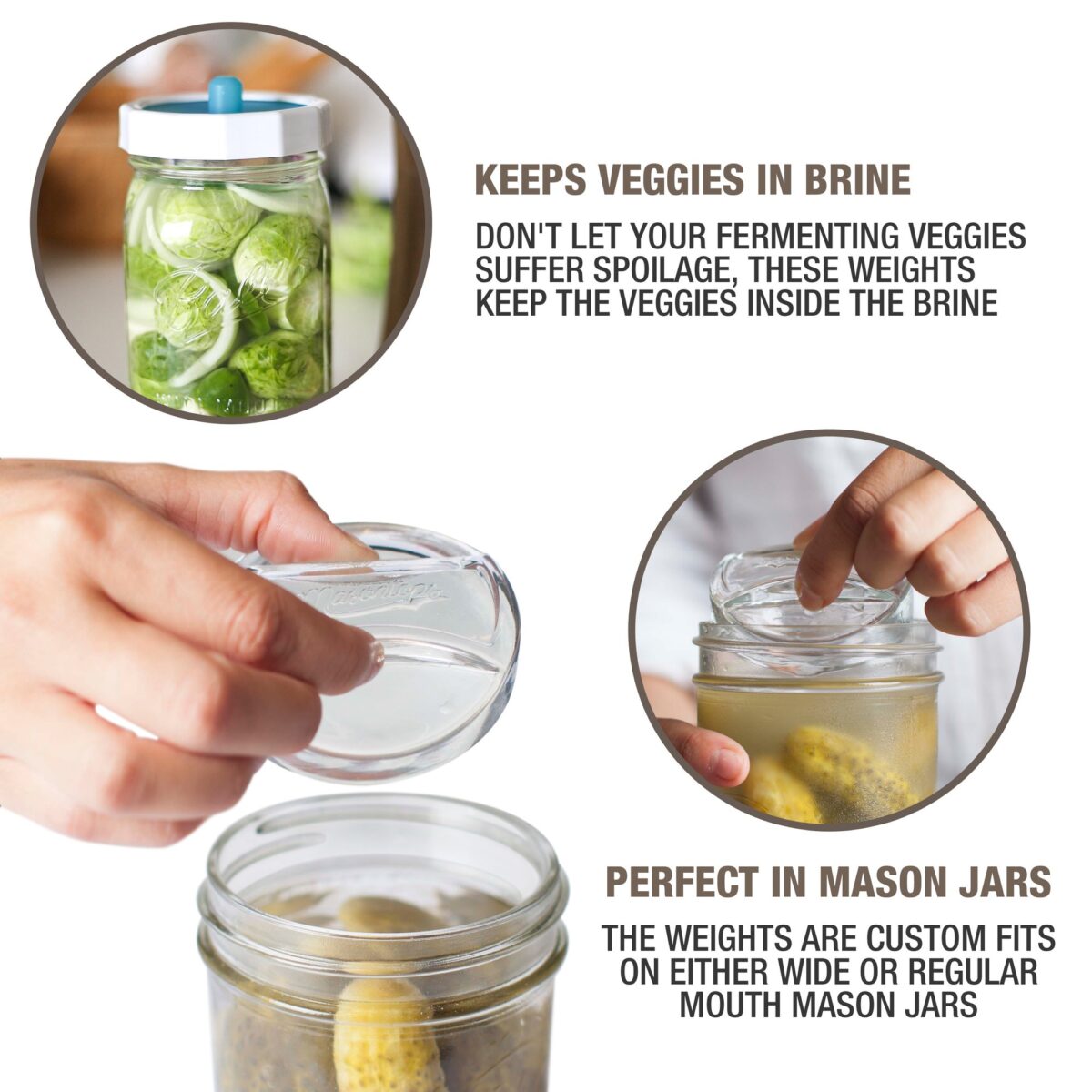
Fermenting weights sold by West Coast Kitchen Garden Shop 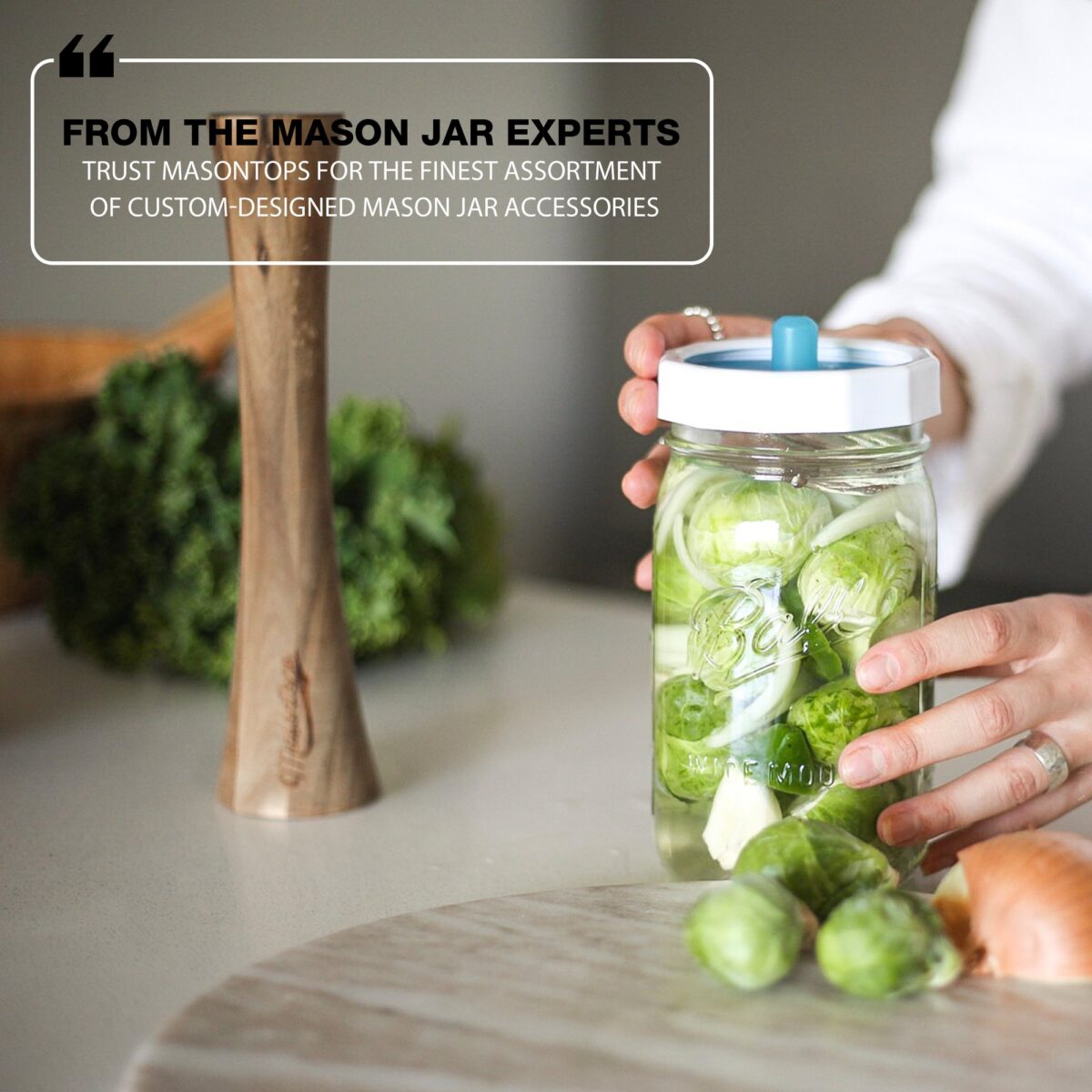
Simple and inexpensive fermenting air locks make pickling and culturing easy 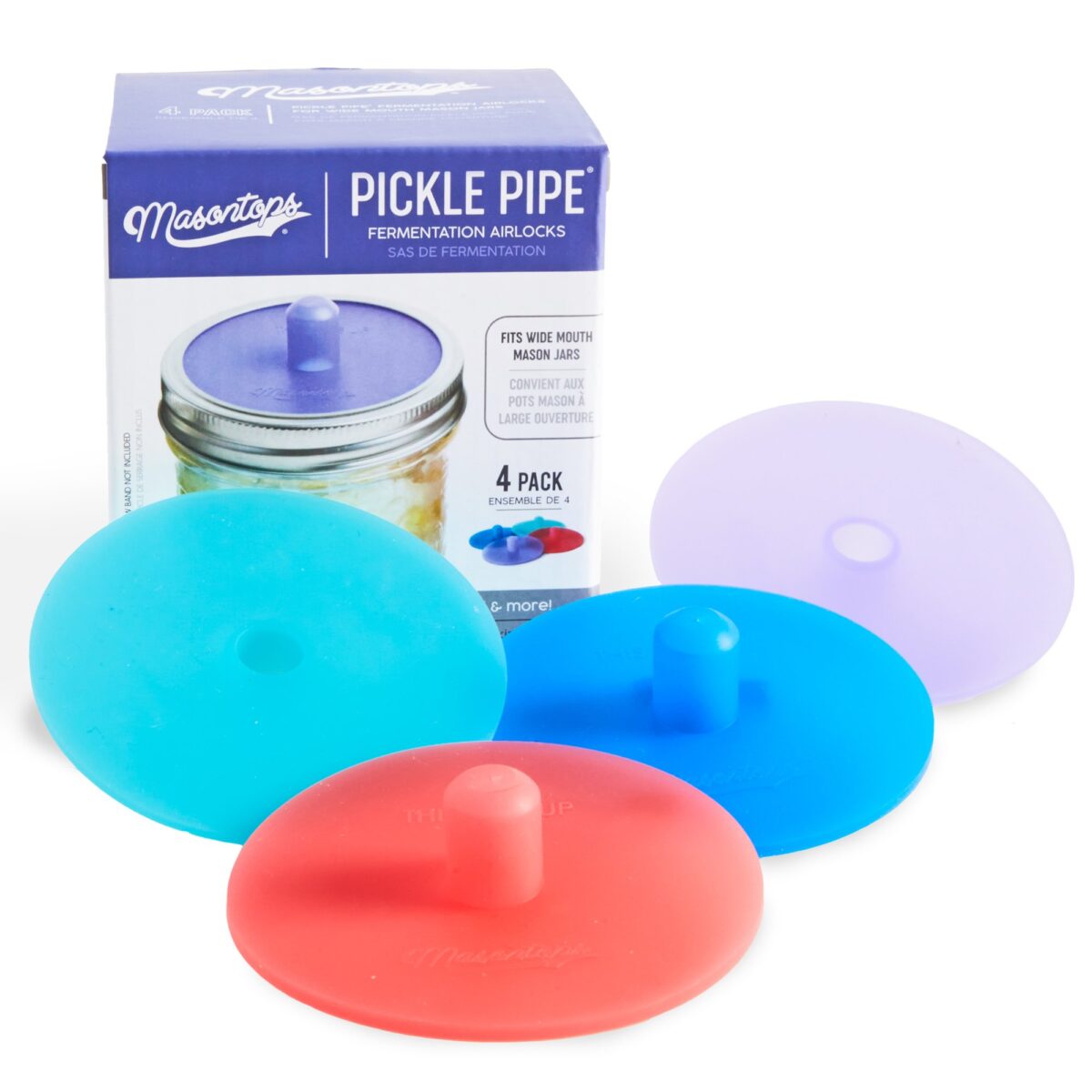
Silicone Pickle Pipes For Home Fermenting-Set of 4
Once you’ve mastered the basic recipe, try adding in different spices or shredded apple, carrot or beet to this recipe to make it your own! Please don't hesitate to ask questions below if you need more information or trouble shooting tips!
If you have any questions or comments, you can find me on Instagram, Pinterest and Facebook. I try to answer any recipe related questions quickly as I know you might be in the middle of making it.
Also check out my FREE PRINTABLE meal planner to make menu planning and grocery shopping a breeze and my shopping guide. And if you like this recipe, I would love it if you give it a star rating in the recipe card.
Cheers and happy cooking, Friends! Sabrina
Have a wonderful and delicious day,
Sabrina
📖 Recipe
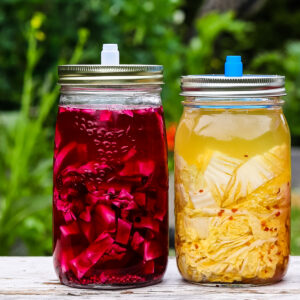
Red Cabbage Sauerkraut
Equipment
- 2 1-Quart wide mouth mason jars (sterilize with boiling water before using)
- Optional: airlock lids or pickle pipe tops for mason jars, glass fermenting weights
Ingredients
- 6 cups Red Cabbage
- 1 tablespoon Peppercorns
- 2 teaspoon Caraway seeds optional
- 3 tablespoon Kosher salt
- 6 cups Filtered water or boiled 20 minutes and cooled to remove chlorine if on city water
Instructions
- Make a brine of 6 cups water to 3 tablespoon sea salt and stir to dissolve.
- Peel off outer leaves of cabbage, cut in half, remove core and thinly slice or shred. You can use a food processor to shred if you like.
- Place ½ tablespoon peppercorns and 1 teaspoon caraway seeds in the bottom of each quart jar. Add shredded cabbage on top of spices and pack it in as evenly as possible, leaving slightly more than an inch of headspace at top of jar.
- Pour brine over red cabbage, leaving 1 inch of headspace (you may have some brine leftover). Top with fermenting weight to keep shredded veggies submerged. It is important to keep your cabbage submerged.
- Close jar with airlock or pickle pipe and fasten gently with jar ring. If you don’t have the special lids, put regular canning jar lids on and undo it once or twice a day to release gases (burping the jar) or use a coffee filter secured on top. Leave to ferment at room temperature 5-10 days. These will likely turn cloudy as it starts fermenting and small bubbles will occasionally be rising. This is normal.
- Once the initial fermentation period is over (it is over when you decide you like how it tastes), it is ready to enjoy. Typically this will take 7-10 days. Once finished to your taste, top with a regular canning lid and move jar to cold storage or refrigerator.
- Kept in the fridge, this will keep easily for 3 months or longer. In cold storage, you should plan to use within 3 months. Usually this won't actually go "bad" but will lose the crispness and bright color if left longer. ***If you end up with mold or a horrible smell that is not like vinegar and cabbage, toss it out and start again with fresh sterilized jars.
Notes
Nutrition
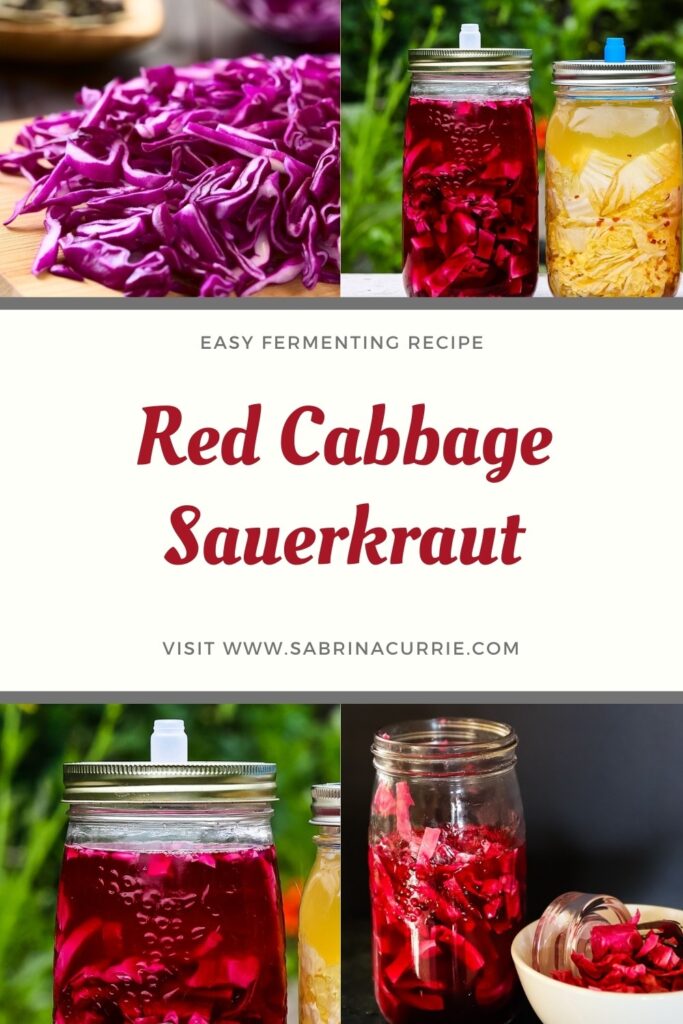
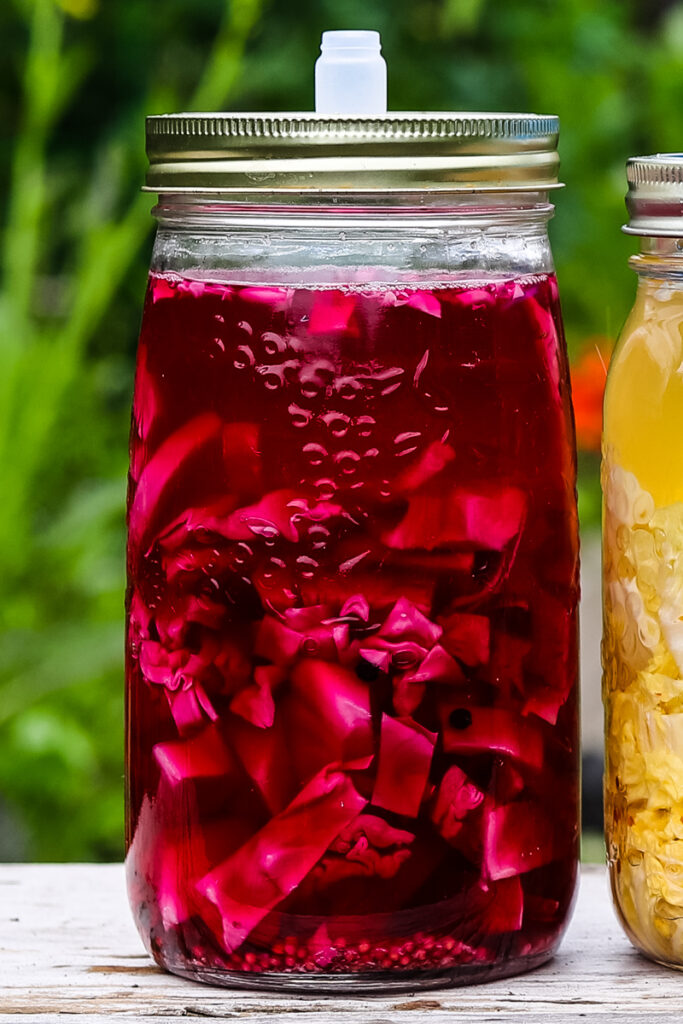



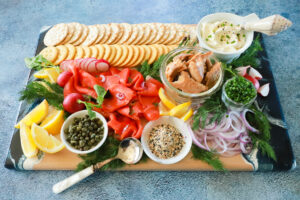
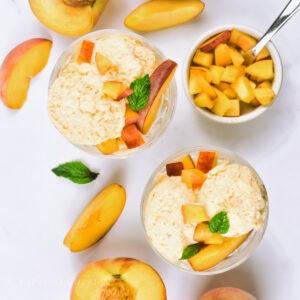

Audrey
This was so much easier than I thought it would be.
SabCurrie
Awesome Audrey! That was my reaction the first time I tried it too!
Pamela A White
When I change over to a regular lid, do I take the weights out then, I excited to see how this comes out!
Sabrina Currie
Hi Pam, yes, when you store in fridge, you can remove the weight.
Raquel
A nice way to enjoy red cabbage!
SabCurrie
I agree, it definitely tastes more interesting and sweet 🙂
BV
I don’t have any of the fermenting equipment, I am trying the plastic bag and water method. Can I just put a dish cloth over the jar while fermenting or does it have to be more seal covered (so right now I have cabbage and brine, in a mason jar, plastic bag with water, then a dish cloth to cover as the plastic bags makes it impossible to tightly close the lid of the jar. Thanks!!
Sabrina Currie
If your dish cloth is fresh and clean , ie fresh from the washer, it should be fine. The main thing is to keep any foreign bacteria out. A jar lid works great too, you just have to let the gas out every one or two days.
Let me know how it goes!
Sangita
So much easier than I thought. Very simple and easy recipe.
SabCurrie
I’m so happy to hear that Sangita! Enjoy 🙂
Jere
I used to make sauerkraut but never with red cabbage, I need to try your recipe. The color is awesome.
SabCurrie
Oooh yes! The red cabbage makes such a gorgeous sauerkraut. Let me know what you think if you try it!
Bernice
I make my own sauerkraut all of the time but I have never used red cabbage as I hand massage the cabbage. If I try it, I'll do it like my grandma taught me and use the pounding method rather than massaging it. I'd have red hands for days!!
SabCurrie
Haha, almost as bad as beets! If you use my method, you don’t have to do any massaging!
Sadia Malik
I like that this has a sweet hint to it and the color is awesome.
Colleen
I love sauerkraut and have never made it with red cabbage, although I like to pickle red cabbage. Now I want to ferment it! Thanks for all the great tips.
nancy
ive never tried making sauerkraut before but the colors looks beautiful! Can't wait to try pickling these!
Terri
I would LOVE to try making my own sauerkraut because I certainly use it in a lot of things. Thanks for the idea!
Julia
My husband makes huge batches of saurkraut and eats it every single day with his lunch. He uses red cabbage as well. This one looks so much prettier than his version . Pinning for later.
SabCurrie
Thank you Julia!
nixodian
adding balsamic or any vinegar to the ferment will still allow the good bacteria to do their job?
Sabrina Currie
It is not ideal to add the vinegar at the beginning because it will slow the natural fermentation process. If you want to add vinegar, I recommend waiting until the cabbage has fermented to your liking before then adding vinegar.
If you choose to add vinegar at the beginning, don't add too much and using a live culture vinegar is recommended. Good luck, let me know if you add the vinegar and how it goes for you.
Jeannie
Something I needed to try because sauerkraut is so good for the body
Marcia Mullins
Is the amount of sodium in the finished product correct?
Sabrina Currie
Hi Marcia,
Yes it is. It sounds like a lot but it is 10 000 mg is 10 g and that is how much is in the entire jar. Likely you would eat at most a quarter of the jar and drain off the excess salt brine substantially lowering how much sodium is in your serving. If you like, you can rinse your sauerkraut before consuming to further lower the sodium content.
Hope that helps 🙂
Marcia Mullins
The nutrional information does not indicate is if it is per serving or based on the complete recipe. Which is it?
Sabrina Currie
It is the nutritional value per jar. This recipe makes 2 jars.
Molly
I’m trying the fermentation process right now and I’m getting a really bad smell coming from the jar. What did I do wrong, or is this normal? I have a glass jar and the lid has a water seal on it.
Sabrina Currie
Are all your ingredients submerged? What vegetables did you use and how long has it been fermenting?
Marcia Mullins
Also can I use Celtic Sea Salt?
Sabrina Currie
Absolutely. I love using sea salt for its trace minerals and flavour.
Marcia Mullins
YAY
Kevin
Hi Sabrina, Just wondering how you serve this. Do you drain it? It's quite a bit more wet than sauerkraut I'm familiar with.
Sabrina Currie
Hi Kevin, you can serve this like any regular sauerkraut. It does have more liquid so just scoop it out with a fork and squeeze as much brine out as you like.
I love it on sandwiches and as a side either cold with sandwiches or warmed in a pan and served with sausages.
Hope that helps,
Sabrina
Kevin Woolf
It's a very liquid product. Do you drain the excess?
Sabrina Currie
Hi Kevin, scoop out the sauerkraut with a fork to leave behind the brine. If you find it too salty, you can give it a quick rinse before serving.
Eve
Hi Sabrina,
Thanks for the recipe and instruction! I don't like the taste of caraway seeds, can I use some minced fresh garlic?
Thank you & stay healthy!
Eve
Sabrina Currie
Hi Eve,
You can definitely skip the caraway but garlic is tricky. It often turns bright blue, green or even grey and it may change the color of your cabbage sauerkraut. I recommend making it plain first (just cabbage and salt brine) then you can add any dried herbs or spices you like next time. Hope that helps. Let me know how it goes!
Sabrina